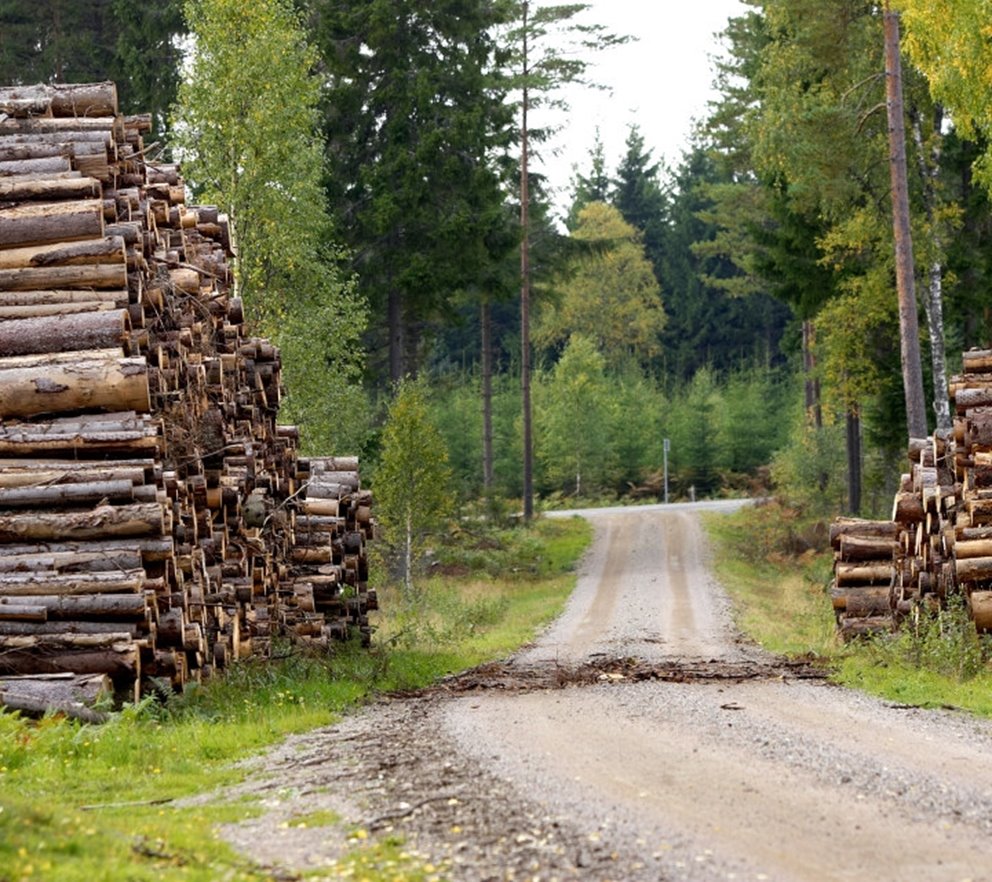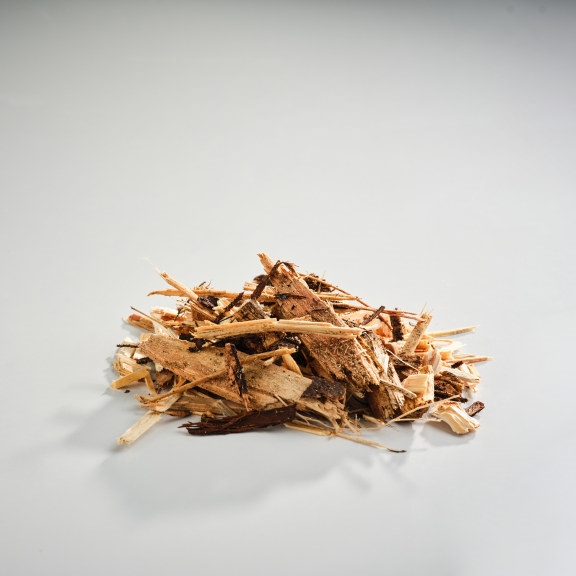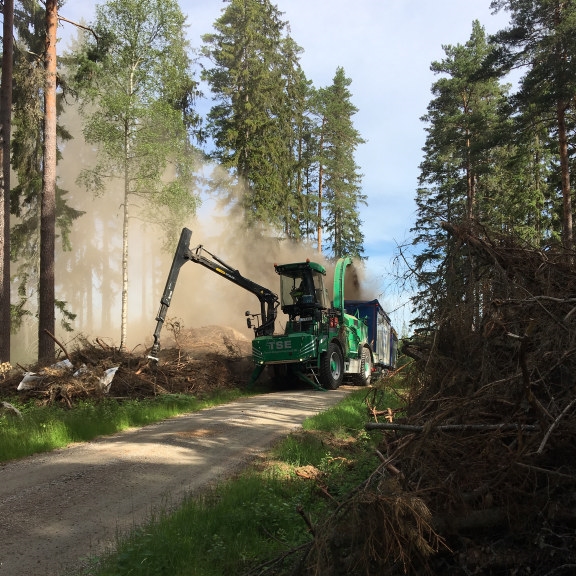Frequently asked questions
| What is harvested during logging in members’ forests? | |
During logging in the forests of Södra's members, the entire tree is utilised, including sawlogs, pulpwood, branches, and tops (forest residues). | |
| What happens to branches and tops (forest residues) after harvesting? | |
Branches and tops are gathered, covered, dried, and chipped after harvesting. | |
| What tree species make up the forest residues? | |
Approximately 75% of the forest residues consist of coniferous trees, and the remaining 25% come from deciduous species. | |
| What is the energy content and ash content of forest residues? | |
Forest residues have an energy content of 0.97 MWh/m³s and an ash content of 2%. |

Forest-based biofuel
High-quality forest residues from family-owned forests
Forest residues are produced from branches and tops (forest residues), as well as thinning and clearing wood. With their high dry matter content, forest residues are among the most energy-efficient fuel products. To maintain the lowest possible moisture content, forwarding takes place between April and October.
Forest residues have a moisture content of 35–50%, which most heating and combined heat and power plants are adapted for. Approximately 75% of the forest residues come from coniferous trees and 25% from deciduous species. The energy content is 0.97 MWh/m³s and the ash content is 2%.

Good to know
Facts about forest residues from Södra
- Forest residues have a high dry matter content, making them one of the most energy-efficient fuel products.
- They are produced from branches and tops (lforest residues), as well as thinning and clearing wood, meaning the entire tree is utilised during harvesting.
- Forest residues have a moisture content of 35–50%, which most heating and combined heat and power plants are adapted for.
- Around 75% of the forest residues consist of coniferous trees, while the remaining 25% come from deciduous species, resulting in a well-balanced and energy-rich product.
Contact us
Didn't find what you were looking for?
Use the search bar in the top menu or go to our contact page to find the right contact person





